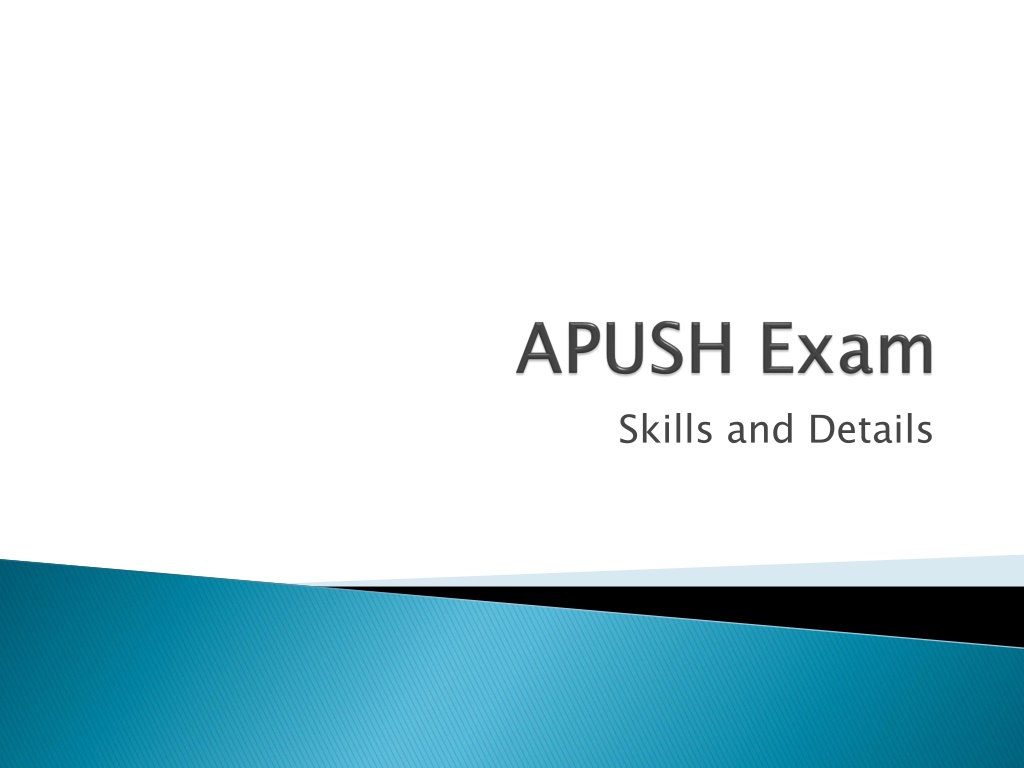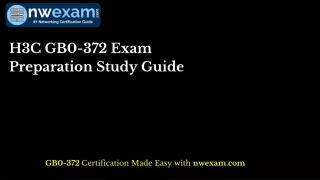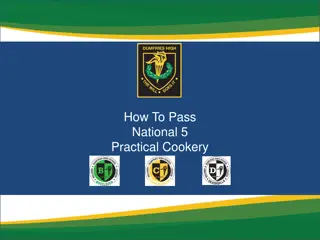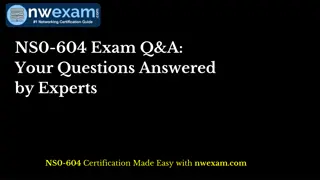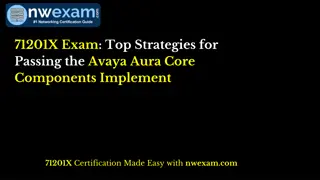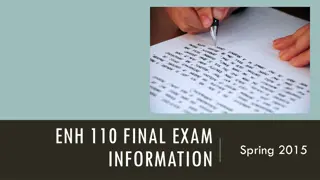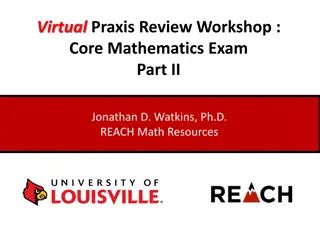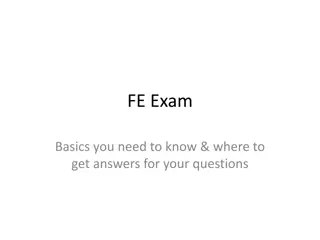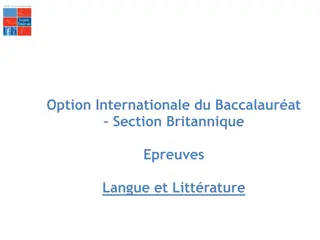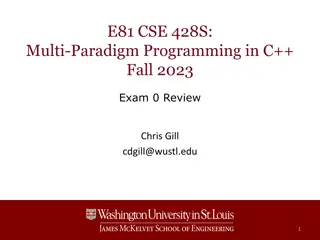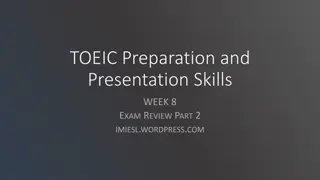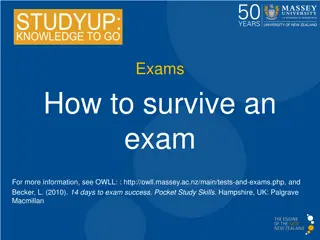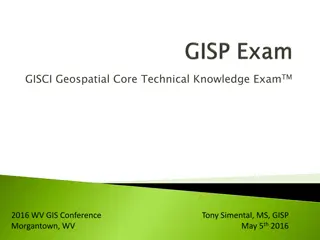AP US History Exam Details and Strategies
Get ready for the AP US History exam with a breakdown of the test structure, key historical skills, thematic areas, and scoring rubrics. Learn how to approach multiple-choice questions, short answer questions (SAQs), document-based questions (DBQs), and long essay questions effectively. Explore the importance of historical reasoning skills and thematic focuses across different time periods. Ace your test by addressing questions accurately, citing specific examples, and explaining your responses. Maximize your points by utilizing all provided documents and showcasing historical analysis skills.
Download Presentation

Please find below an Image/Link to download the presentation.
The content on the website is provided AS IS for your information and personal use only. It may not be sold, licensed, or shared on other websites without obtaining consent from the author.If you encounter any issues during the download, it is possible that the publisher has removed the file from their server.
You are allowed to download the files provided on this website for personal or commercial use, subject to the condition that they are used lawfully. All files are the property of their respective owners.
The content on the website is provided AS IS for your information and personal use only. It may not be sold, licensed, or shared on other websites without obtaining consent from the author.
E N D
Presentation Transcript
55 multiple choice questions -Time: 55 minutes - -40% 3 short answer questions (SAQ) -Time: 40 minutes - -20% 1 document based question (DBQ) -Time: 60 minutes - -25% 1 long essay question (LEQ) -Time: 40 minutes - -15% 55 minutes 40% 40 minutes 20% minutes 25% minutes 15% Friday, May 11 Friday, May 11th that 8:00am at 8:00am
History Reasoning Skills: Change and Continuity Over Time (CCOT) Causation (and effect) Comparison (and contrast) Periodization
1. American and National Identity (NAT) 2. Politics and Power (POL) 3. Work, Exchange, and Technology (WXT) 4. Culture and Society (CUL) 5. Migration and Settlement (MIG) 6. Geography and the Environment (GEO) 7. America in the World (WOR)
Period 1: 1491-1607 ~5% Period 2: 1607-1754 ~10% Period 3: 1754-1800 ~12% Period 4: 1800-1848 ~10% Period 5: 1844-1877 ~13% Period 6: 1865-1914 ~13% Period 7: 1890-1945 ~17% Period 8: 1945-1980 ~15% Period 9: 1980-Present ~5% 10% 12% 10% 13% 13% 17% 15%
0-3 points possible for each SAQ, 3 SAQs for a total of 9 points Focus of the How and Why Will address 1 or more thematic learning Objective Use as many details as possible Any incorrect details will be overlooked as long as there is correct information included Always use proper nouns and be as specific as possible
ACE your test A A address the question C C cite specific examples E E explain or elaborate (How and Why) Cite specific examples but no need for direct quotes The SAQs do not have to be 100% accurate or conclusive because you have limited information
0-7 points possible There will always be 7 documents this can include images or graphs You must use 6 or 7 of the documents to get full credit One of the historical reasoning skills will always be the focus of the question If you write This shows ______ then you must explain the HOW and WHY Must be written in either blue or black ink If you want to erase something, strike it through once and it will be ignored: Example
Big C Context: Put the prompt in its time period and how it fits Give the historical background Set the stage with specific information This pertains to the Contextualization requirement Little c context: Put the document or author in its historical context 4 docs minimum Information HAS to be correct or it doesn t count This pertains to the Sourcing Documents requirement HIPP Big C Context: Little c context:
0-6 points possible Based on one of the big four skills Two topics/choices both based on the same skill Only choose one Explain and support your claims If a question asks to compare you also need to contrast. If it asks for similarities, it is also looking for differences Synthesis
Taking the time to consider what the question really asks is often overlooked in the rush to start writing. Stop and ask yourself, "What is the targeted historical thinking skill in the question? Causation? Comparison? Continuity and change over time? Periodization?" You might try reading over the question or prompt three times. What is the key word(s) or phrase in the question? CIRCLE it. It could be verbs such as "analyze, "explain" or "support," "modify," or "refute." All questions have one thing in common: They demand the use of historical thinking skills and analysis of the evidence. A long-essay answer will not receive full credit by simply reporting information. Therefore, be on your guard for questions that start out with the verbs "identify" or "describe." Such a question is usually followed by "analyze or some other more demanding thinking skill. All questions have one thing in common: They demand the use of historical thinking skills and analysis of the evidence.
Anticipate counterarguments. Consider arguments that are against your thesis, not to prove them, but to show that you are aware of opposing points of view. The strongest essays confront conflicting evidence. Remain objective. Avoid rhetoric, especially on social issues. The AP test is not the place to argue that a group was racists or that some were the "good guys" while others were the "bad guys." Do not use slang terms! Communicate the organization and logical development of your argument. Each paragraph should develop a main point that is clearly stated in the topic sentence. Provide a few words or a phrase of transition to connect one paragraph to another. Focus on the thesis in the conclusion Restate the thesis in a fresh and interesting manner or explain its significance. The conclusion should not try to summarize all the data or introduce new evidence. NEVER contradict your thesis or argument in the Conclusion
While length is no guarantee of a top grade, the longer essay often receives a higher grade because of its depth of analysis and factual support. DO NOT just try to fill up a specific number of pages but, instead write an insightful, persuasive and well-supported essay. DO NOT just list a few generalities or a "laundry list" of facts. DO NOT write in the narrative style by telling stories, but rather your goal should be to write analytically and support your argument with specific knowledge. DO NOT use fillers and flowery language in an attempt to impress the reader. Write a a concise, coherent essay in which every word has a purpose. Don t waste time!
Thesis can be two sentences but they must be continuous Thesis can also be in conclusion Show HOW and WHY in everything you write! Outlining skills H historical context I -intended audience P purpose P point of view
